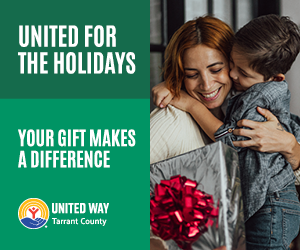This is fortuitous: My pick for the best documentary of the year (and one of my top 10 movies of the year) comes out on DVD this week, so you can watch a great and disturbing movie that will likely contend for the Best Documentary Oscar. I’m handling the links in this post somewhat differently than I did in my other posts about 2013’s movies. Since I haven’t written about many of these films before, the links on their titles will take you to the movies’ websites, though where I have written about them, I’ll provide those links as well. Several other of these films are already available on disc, and they all deserve an audience.
1. The Act of Killing
I already covered this movie somewhat when it made my Top 10 movies list. The humor and creativity in this movie acts as necessary sugarcoating for all sorts of hideous stuff in here: local politicians endorsing gangsters as vital to democracy, one guy who can’t stop laughing as he tells the story of how his father was murdered, another death squad leader who gleefully relates how he killed his girlfriend’s father as soon as it became okay to kill Chinese people (no word on what the girlfriend thought of this), and death squad leader Anwar Congo calling his young grandchildren to watch a re-enactment of his own torture and death. The conceit with the killers re-staging their crimes as scenes from movies works brilliantly — Anwar plays himself in one horror film where he confronts a ghost of one of his victims. (By the way, Indonesian ghosts are scary as hell.) Even this doesn’t bring home the horror of what he’s done as much as a night on the same floor where he strangled hundreds of people. That last scene is indelible.
2. Leviathan
What to make of Lucien Castaing-Taylor and Véréna Paravel’s remarkable documentary, which played at Lone Star Film Festival 2012? The French filmmakers followed a fishing crew off the coast of Maine, but their cameras went everywhere, swimming with the fish they caught and flying with the birds overhead. They provide no context for their images: no interviews, no narration, no supplementary information crawling by on the screen, no music except for what the fishermen are listening to. We’re just left with the visceral impact of seeing the work they do in all its squalor and its glory, captured partly by cameras filming from under the gigantic piles of fish lying on the boat. We’re free to draw our own conclusions.
3. Tim’s Vermeer
The most dazzling moment of any documentary from this year came when San Antonio inventor Tim Jenison demonstrated his photorealistic painting technique to reproduce a picture from his father-in-law’s high-school yearbook. Penn and Teller do up this movie in their typically whimsical style — the latter is the director, the former is the narrator and Jennings’ personal friend who first got wind of Tim’s discovery about how Jan Vermeer painted his deathless works of art. To prove his point, Jenison sets about reproducing Vermeer’s “The Music Lesson” as faithfully as possible, going to insane lengths and building a life-size reproduction of the room in the painting in a warehouse so he could paint it. The results are pretty good for a guy without any training in art. Maybe he hasn’t found the whole truth about Vermeer’s painting techniques, but this film (which played at this year’s Lone Star Film Festival) has a few things to teach us art lovers.
4. Caesar Must Die
The Taviani brothers’ hybrid movie also played at Lone Star Film Festival 2012, and I’ll admit I’m listing it here because I’m a sucker for Shakespeare. Part of the film documents the inmates at Italy’s Rebibbia Prison (reserved for the country’s worst criminals) working through a production of Julius Caesar. Yet part of it is just a straight-up (albeit very pared-down) staging of the play in the prison’s various locations, with the actors performing in their uniforms. I like the translations of Shakespeare into Italian vernacular; Caesar says about Cassius, “I don’t like him. He thinks too much.” The play gets a fine treatment from these actors and from the brothers, who ask penetrating questions about what effect working on this play has, and doesn’t have, on these inmates.
5. The Gatekeepers
Dror Moreh interviewed all six of the surviving heads of Israel’s domestic security agency, the Shin Bet, for this film. As you might expect, these men are a bunch of tough old birds. As you probably wouldn’t expect, they’ve all come around to supporting a two-state solution to the Palestinian problem. It’s fine to sit at a desk and advocate killing all the terrorists, but these men all learned from their experience on the ground that fighting the enemy effectively requires seeing them as a bunch of ordinary guys acting from an understandable set of motivations. Something good to keep in mind.
6. Cutie and the Boxer
Zachary Heinzerling draws a fascinating, layered portrait of the married artists Ushio and Noriko Shinohara. This Japanese couple’s English remains rudimentary even though they’ve been living in New York for decades. Ushio is the internationally famous one and in fearsome shape for an old man, as we see in the opening credits when he creates a painting by dipping boxing gloves in paint and punching a canvas. Noriko, some decades younger, is the one who came to New York to worship at the great artist’s feet and do some painting of her own, only to discover that such a life isn’t all peaches and cream (or the Japanese equivalent, uh, miso and sake). Yet the movie catches them just as Noriko is finally coming into her own creatively, with a series of black-and-white drawings based on her life with Ushio. The egocentric Ushio supports his wife’s art even though it doesn’t cast him in a flattering light, which is not only moving but also typical of the way the movie tracks this marriages complexities.
7. Stories We Tell
I reviewed Sarah Polley’s film this past summer, and I don’t have too much to add. It’s good to see her acting again, even if it’s only in wordless re-enactments of her own life. And Michael Polley comes off like a prince in the face of everything he learns here.
8. God Loves Uganda
“Who wants to see a man lick poo-poo from another man?” screams Rev. Martin Ssempa at his congregation. It’s hilarious, but it’s also horrifying, because he has whipped the crowd into a murderous frenzy against homosexuals. (And it’s not just talk in Uganda. They kill gay people over there, and suffer no consequences for it.) Roger Ross Williams’ film angrily exposes the links between American evangelical Christians and anti-gay murders in that African nation. He also tags along with American students treating their missions to Uganda as a fun summer vacation. How I wish he had confronted them with evidence that they’re cooperating with a genocidal regime. Pray for the homosexuals in Uganda, who, if their president signs a bill currently on his desk, could be thrown in prison for life for being who they are.
9. The Punk Singer
My year isn’t complete without some documentary making me feel profoundly ignorant for not knowing about something. This year, it was Sini Anderson’s profile of former Bikini Kill lead singer Kathleen Hanna that did that trick. The movie not only reviews her career as a ground-breaking 1990s feminist punk rock musician but also reveals the real reason why she quit performing in 2005 (undiagnosed and untreated Lyme disease). Still tattooed, funny, articulate, bruisingly intelligent, and impossibly pretty, Hanna makes a compelling subject. As a music documentary, this is considerably more illuminating than 20 Feet From Stardom (see below).

10. Évocateur: The Morton Downey Jr. Movie
If you weren’t around in the late 1980s, you probably missed the meteoric rise and fall of this failed lounge singer-turned-vitriolic TV host who broke the mold of talk shows by screaming at his guests and nakedly appealing to his audience’s basest instincts. Seth Kramer, Daniel A. Miller, and Jeremy Newberger not only link Downey’s career with the rabble-rousing of today’s cable TV pundits (with some illuminating insights from none other than Pat Buchanan), but also dig into the personality of this sociopathic and self-destructive personality who burned his own career by staging a hate crime. Bonus points for the animated sequences and the readings from the volume of poetry that Downey published in the 1960s, which reads like an indictment of the man’s own later success.
Honorable mentions: Morgan Neville’s tribute to backup singers 20 Feet From Stardom; Jason Osder’s entirely footage-based account of a police firebombing Let the Fire Burn; Gabriela Cowperthwaite’s compelling piece of journalism Blackfish; Rodney Ascher’s entertainingly convoluted Stanley Kubrick appreciation Room 237; Vlad Yudin’s engaging look at bodybuilding Generation Iron.



















